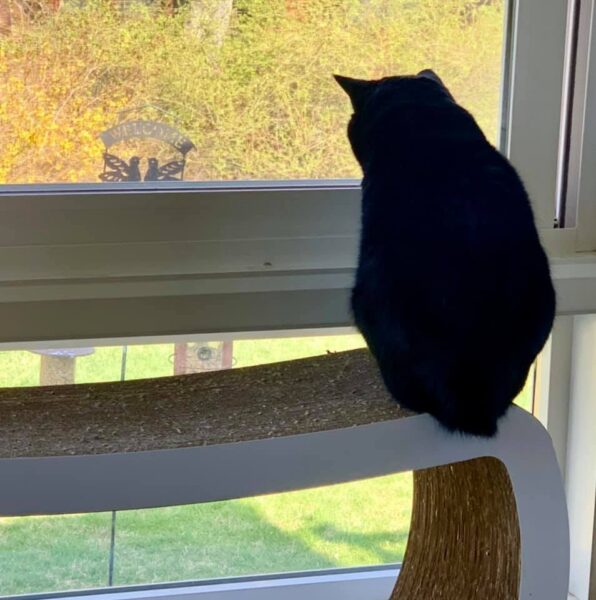
Strategies to Safeguard Bird Feeders from Cats
Outdoor cats enjoy a reputation for their playful antics and curious nature. However, this curiosity often extends to their natural instinct as predators, which poses a significant threat to backyard birds, particularly around bird feeders. Bird feeders attract a variety of wild birds by providing a reliable source of food, but they can also unintentionally become hunting grounds for domestic cats. Cats and bird feeder require a plan. The balance between nurturing backyard wildlife by installing bird feeders and protecting birds from cats is a complex one that requires careful consideration and strategic planning.
Responsible bird enthusiasts and cat parents are increasingly seeking methods to protect birds without disrupting the joy and benefits of interacting with wildlife. Strategies such as optimal placement of bird feeders, use of deterrents, and enhancing natural habitats work together to minimize the risks for birds. Meanwhile, responsible cat parenting, including keeping cats indoors or supervised, can significantly reduce the likelihood of predation. Understanding the impact of cats on bird populations and employing best practices for bird feeder placement are essential steps in this process. Collaborative efforts and continued advancements in conservation can lead to heightened awareness and more effective measures to safeguard birds from predation while still enjoying the presence of both cats and birds in our outdoor spaces.
Key Takeaways
- Bird feeders can attract predators like cats, necessitating protective strategies.
- Responsible cat guardianship and feeder placement are essential for bird protection.
- Enhancements in bird habitats contribute to their safety from predation.
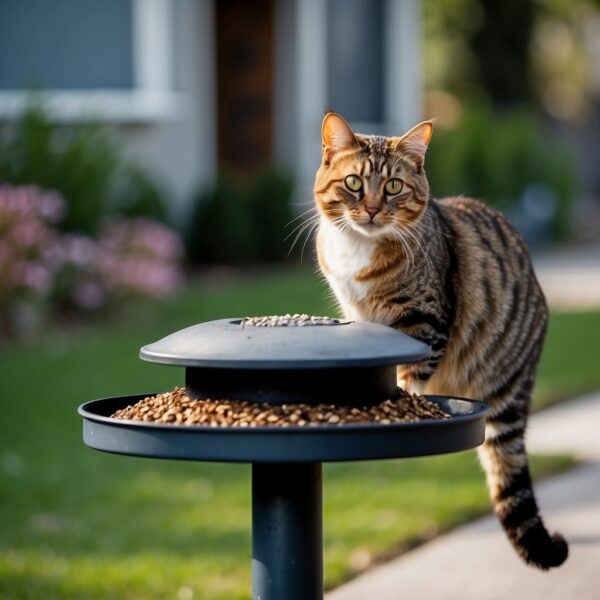
Understanding the Impact of Cats on Birds
To protect bird populations, it is essential to understand the significant impact that both domestic and feral cats have as predators.
Predatory Behavior of Cats
Cats are natural hunters with instincts that drive them to pursue prey. Feral and outdoor domestic cats exhibit behaviors such as stalking, pouncing, and killing, which can have detrimental effects on local bird species. Cats’ skills in hunting are not dampened by a regular feeding schedule; they will hunt even when not hungry.
Birds and the Ecological Balance
Birds play a crucial role in maintaining ecological balance. They contribute to pest control, pollination, seed dispersal, and the overall health of habitats. The introduction of predatory cats, especially in regions like the United States and Canada, disrupts this balance by removing birds from their roles.
Impact of Cat and Dog Predation on Bird Populations
In the United States, outdoor cats are reported to kill approximately 2.4 billion birds annually, making them a threat to bird populations. Studies suggest that the substantial attention and blame directed at domestic cats for their hunting behavior is disproportionately large compared to that directed toward domestic dogs, given that our results show that of dogs and cats that catch prey, dogs are more likely to catch native species.
This predatory pressure is aggravated in contexts of habitat loss and migration, where birds are already vulnerable. Conservation organizations in regions such as Hawaii have identified cats as a direct cause behind some bird species’ risk of extinction. The negative impact of cats and dogs on birds is a conservation priority to address.
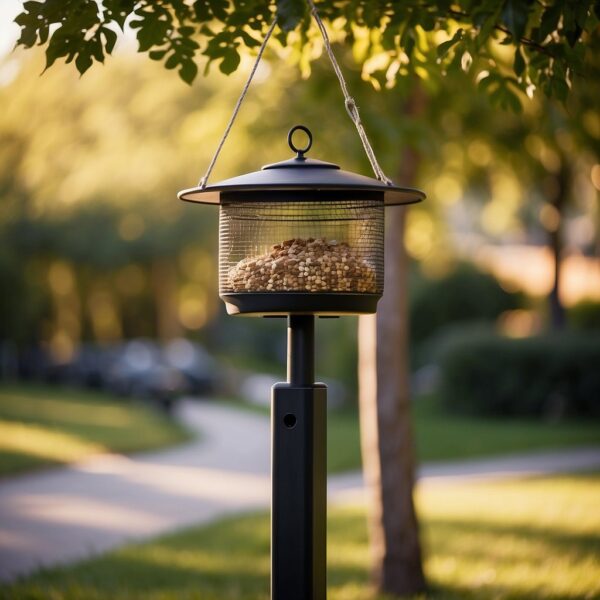
Best Practices for Bird Feeder Placement
Ensuring the safety of birds while deterring cats requires careful consideration of where bird feeders are placed. Strategic placement, appropriate landscaping, and the use of specific feeder designs can create a safer environment for birds.
Strategic Feeder Positioning
It is crucial to position bird feeders in a way that minimizes the risk of bird collisions with windows and predation by cats. Feeders should be placed either within 3 feet of a window to prevent birds from gaining enough velocity to injure themselves if they hit the glass or more than 10 feet away to reduce collision risks altogether. Additionally, placing feeders on a tall pole at least 10 to 12 feet away from shrubs or other potential cat hiding spots gives birds a better chance to spot predators.
- Close to Windows: Within 3 feet to minimize injury from collisions.
- Away from Windows: More than 10 feet to avoid collisions.
- Tall Pole Positioning: Ensures a clear view for birds to spot predators.
Landscaping for Safety
Landscaping can play a significant role in protecting birds from cats. The goal is to provide cover for birds using dense plantings and a wildflower garden. These environments offer birds places to perch and hide, while also making it difficult for cats to stalk unnoticed.
- Provide Cover: Use dense plantings and shrubs.
- Visibility: Ensure feeders and birdbaths have open spaces around them for birds to spot predators.
- Wildflower Gardens: Offer natural food sources and additional perches.
Feeder Designs That Discourage Cats
Selecting bird feeder designs that are less accessible to cats can help protect the birds. Feeders with a design that requires birds to perch while they feed, like weight-sensitive perches that close off access to the seed when something heavier than a bird lands on them, effectively minimize the chances of cats reaching the birds. Wire cages around feeders can also provide barriers that deter cats.
- Perch Design: Weight-sensitive perches restrict access to larger animals.
- Caged Feeders: Wire cages around bird feeders create a physical barrier for cats.
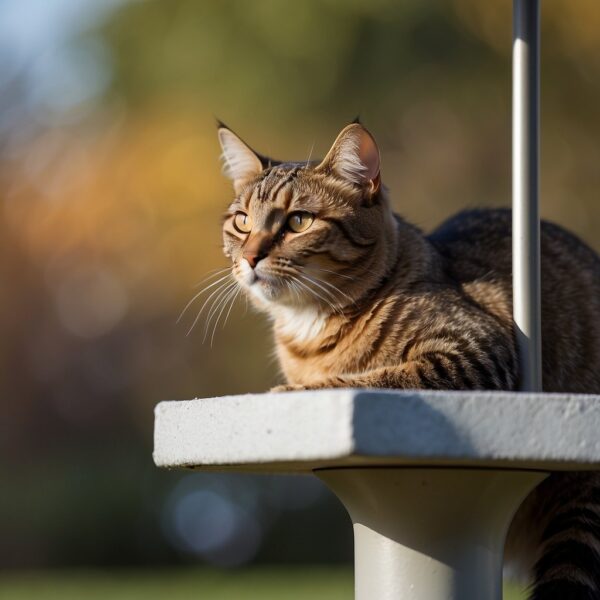
Protecting Birds Through Responsible Cat Parenting
Responsible cat parents can significantly reduce the predation of birds by domestic cats. By ensuring cats are safely contained or deterred from hunting near bird feeders, cat parents can help protect local bird populations.
The Benefits of Keeping Cats Indoors
Keeping cats indoors is a straightforward strategy to prevent the hunting of birds. Indoor cats pose no threat to birds, and this measure alone can drastically reduce the number of birds killed by cats each year. Cat parents can enhance their indoor environment by providing various enrichment activities such as climbing structures, toys, and window perches to satisfy the cat’s natural instincts.
- Cat Enrichment Options:
- Climbing structures and scratching posts
- Interactive toys and puzzles
- Window seats for bird viewing
Creating Safe Outdoor Spaces for Cats
For cat parents wishing to allow their pets outdoor access, creating safe spaces is imperative. A ‘catio’—an enclosed outdoor patio designed for cats—can provide fresh air and stimulation without giving cats the opportunity to hunt birds. Another viable option is a cat-proof fence that keeps cats within their own yard while still providing an outdoor experience.
- Outdoor Solutions:
- Catios with secure enclosures
- Cat-proof fencing systems
- Supervised outdoor time
Understanding and Utilizing Deterrents
For those situations where cats may still come into contact with areas where birds are feeding, deterrents can be effective. Scent deterrents discourage cats from entering specific areas without causing them harm. Additionally, collars such as the “BirdsBeSafe” collar can make cats more visible to birds, giving the birds a better chance to escape.
- Deterrent Methods:
- Spray scent deterrents around bird feeders
- Fit cats with brightly colored BirdsBeSafe collars
- Position feeders out of a cat’s jumping reach
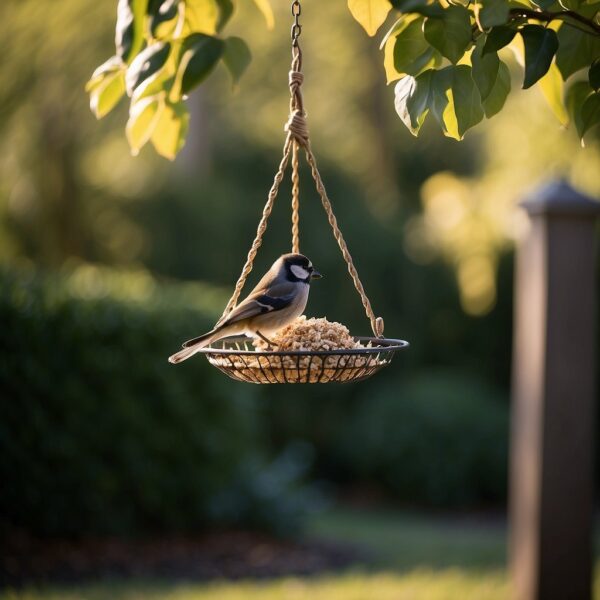
Enhancing Bird Habitat for Improved Safety
Creating a secure environment for birds in the presence of stray cats is essential to reducing bird injuries and mortality. Strategic habitat enhancement is a key solution for safeguarding backyard birds.
Planting Native Vegetation
By incorporating native plants into the landscape, homeowners can provide birds with natural food sources and protective cover. Native vegetation fosters a habitat where birds can forage and nest successfully. Specifically:
- Shrubs and thickets: Offer natural hiding spots against predators.
- Berry-producing plants: Serve as a safe food supply.
- Tall trees: Create safe nesting sites and vantage points for birds to monitor for stray cats.
Creating Barriers and Safe Zones for Birds
Safe zones for birds can be established to reduce encounters with cats. Effective strategies include:
- Placement of feeders and baths: Ensuring they are positioned at least ten to twelve feet away from cover that could conceal cats, allowing birds to detect potential threats in time.
- Isolation from cat access: Installing feeders on slick metal poles with baffles can prevent cats from climbing.
In addition, bells and collars on cats serve as audible warnings, alerting birds to potential danger. It is, however, important to note that some birds may become desensitized to these sounds over time, and this should not be the sole line of defense.
Collaborations and Advancements in Conservation
In the intersection of wildlife management and domestic animal care, significant strides have been made through collective efforts and technological developments. These initiatives aim to curtail the impact of free-ranging domestic cats on bird populations, leveraging expertise from various conservation organizations and innovative tools.
Involvement of Conservation Organizations
Conservation organizations have spearheaded campaigns and research to address the effects of free-ranging cats on birds. They not only fund and conduct scientific studies that assess the extent of predation on bird populations but also engage communities in protective measures. For example, the American Bird Conservancy has been active in endorsing the “Cats Indoors” campaign, aimed at keeping pet cats indoors to prevent the hunting of birds.
Collaborative partnerships between such organizations and academic institutions often result in evidence-based conservation strategies. They work on multiple fronts:
- Creating educational resources that inform the public about wildlife protection.
- Launching conservation programs that involve habitat restoration, which helps increase bird populations and their resilience against predation.
- Advocating for local and national policies that facilitate a balance between pet guardianship and wildlife conservation.
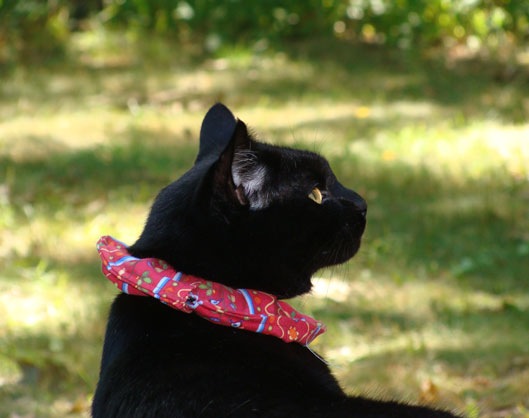
Technological Innovations for Wildlife Protection
Recent technological advancements provide new approaches to wildlife protection from the predation risks posed by free-ranging domestic cats. Innovations include:
- BirdsBeSafe Cat collar: These bright, patterned covers are designed to make cats more visible to birds, thereby reducing the risk of predation. The collars are built on the principle that birds can detect bright colors effectively, offering them a warning to flee. Research indicates a potential reduction in bird and small mammal mortality when these collars are used.
- Tracking devices: Collars fitted with GPS or other tracking technologies help monitor the movement of domestic cats, which enables owners to understand the range of their pets and implement measures to minimize their impact on wildlife.
Utilizing these technological solutions stems from a growing recognition of the need to protect bird species in both urban and wild settings. Conservationists and tech developers continue to refine such tools, hoping to further mitigate the ecological footprint of free-ranging domestic cats on vulnerable bird populations.
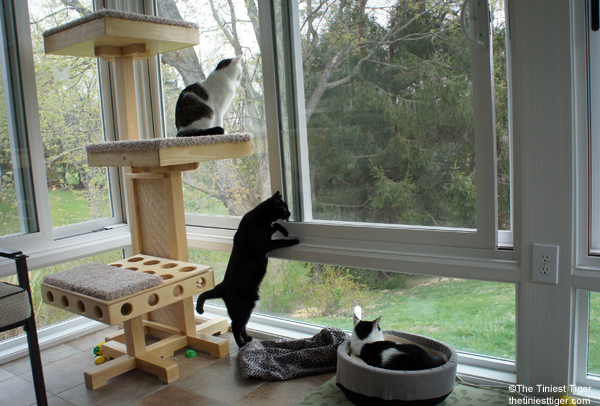
Frequently Asked Questions
How can I deter cats from approaching bird feeders in the garden?
Place feeders and birdbaths at least 10 to 12 feet away from cover where cats might hide, giving birds a chance to spot any predators. Additionally, using motion-activated deterrents like sprinklers can startle and discourage cats.
What are some effective cat-proof bird feeder designs?
Bird feeders with protective domes or cages are effective in deterring cats. Look for designs that prevent cats from climbing or reaching the feeding area. Some feeders may also have weight-activated systems that close access when a cat’s weight is detected.
Are there tall bird feeder poles that can help keep birds safe from cats?
Yes, a pole that is at least 7 to 8 feet tall and positioning it at a sufficient distance from trees and structures can reduce the risk of cats reaching the birds. Pole-mounted feeders should also have a baffle to prevent cats from climbing up.
What methods can prevent a neighbor’s cat from hunting birds at feeders?
Besides talking to the neighbor about keeping their cat indoors, planting thorny bushes around feeders may help. You can also install physical barriers or look into ultrasonic cat repellents that emit sound frequencies unpleasant to cats but not harmful.
Can a window bird feeder be safe from cats, and if so, how?
A window feeder can be safe from cats if you attach it high on a window away from ledges or surfaces where cats can jump from. Ensure that there is no furniture close to the window that cats could use to reach the feeder.
What is considered the best bird-friendly cat repellent?
Non-toxic scent repellents made from natural ingredients like citrus or rosemary may help to deter cats without harming birds. However, the effectiveness of scent repellents can be variable and may need regular reapplication.